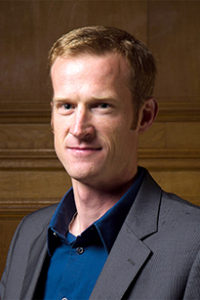 Notre-Dame on April 15, 2019. (Photo by Wandrille de Préville, Wikimedia Commons)
Notre-Dame on April 15, 2019. (Photo by Wandrille de Préville, Wikimedia Commons)On rebuilding Notre Dame

Matthew De Jong, professor of civil and environmental engineering at UC Berkeley
On April 15, a devastating fire ripped through Paris’ Notre Dame Cathedral and burned for almost 12 hours. Working through the night, over 400 firefighters managed to save the historic facade, tower, walls, buttresses, pipe organ and stained-glass windows. But the cathedral’s spire and roof were gone.
Afterward, French President Emmanuel Macron vowed to rebuild the cathedral within five years. Overnight, people donated hundreds of millions of euros to Notre Dame’s reconstruction.
But Matthew De Jong, professor of civil and environmental engineering at UC Berkeley, is skeptical about this ambitious timeline. De Jong — who did his Ph.D. work on the seismic assessment of historic buildings — spent nearly a decade as a professor at Cambridge University, during which time he assessed numerous heritage structures across Europe. He recently spoke with us about Notre Dame and the proposed reconstruction of the cathedral.
What can you tell us about the structure of Notre Dame?
The structure is built like many gothic cathedrals. There is a stone vaulted ceiling, which is what you see when you look up inside the cathedral. Above the vaults, there are timber trusses that support the lead roof above. That is typical in medieval buildings. Stone is very strong in compression, but the mortar between the stone is very weak in tension. So the shape of the vaults is designed so that the vaults act primarily in compression. Meanwhile, the timber trusses can support the flat lead roof above because timber is effective in carrying loads both in compression and tension.
In this case, the timber roof is what primarily burned up in the fire. But the stone walls on either side of the nave, which extended above the vaulted ceilings to support the timber roof, were exposed to the fire and might have sustained damage as well.
What are some of the challenges of rebuilding Notre Dame?
A lot of water was used to put out the fire, so a short-term need is to make sure that the stones dry out properly. But ensuring the stability of the vault and the upper walls is a bigger concern. When the cathedral’s spire fell, it penetrated through the vault, which is structurally important to the building, so that one section of the vaulting is nearly completely destroyed. In the areas surrounding this damage, additional portions of the vaults may need to be removed to prevent additional stones from falling. The upper walls on either side of the nave may also require repair and stabilization.
The process of rebuilding will take longer. Extensive inspections will be required to identify the extent of the rebuild, followed by the redesign and sourcing of appropriate materials, which will take time. Luckily, an extremely detailed laser scan of the entire building was taken a few years ago by the late Andrew Tallon (professor of art history at Vassar College), who was leading a campaign to raise money to preserve the cathedral. This laser scan will be an extremely useful resource to aid the redesign and rebuild process. The actual reconstruction will be a labor-intensive process. Typically, master masons would have shaped and placed each stone by hand. And during this entire process, formwork will be required beneath the vaults. After the stone is rebuilt, sourcing timber to rebuild the roof as it was before may also be a challenge.
Can the repairs can be completed in five years?
That would be a big push. For a typical medieval building with this level of damage, that would be a very short amount of time, but Notre Dame will be a very high priority. It’s partially a matter of having the money to get enough skilled workers to expedite the process. But you also want to make sure the correct decisions are made. A building like this is expected to last indefinitely, so making hasty decisions would be a mistake. Overall, it’s difficult to say. I think it’s optimistic.
Will Notre Dame be the same after it is rebuilt?
One of the interesting questions when rebuilding will be the extent to which the geometry and materials of the original structure are preserved. For a structure like Notre Dame, I would expect there to be a huge effort to replicate what was there before. Particularly for the vaulted ceiling and roof, I expect the laser scan data will be used to match the previous structure as much as possible. However, it will be particularly interesting to see how the spire is rebuilt. The spire that burned down was in fact built in the 19th century, designed by Viollet-le-Duc. The original spire was much different. This decision could take time and could cause controversy among preservationists.
Interview by Linda Vu, UC Berkeley College of Engineering
